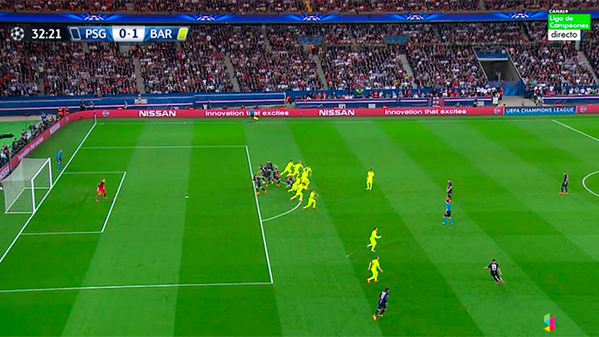Yesterday, my friend who was the Assistant Referee at our last match, was interrogating me as to why we were trying the offside trap in a game we were losing. I pointed out to him that once we got it, the goals against
stopped. I also had to explain to him that until we started working on it, our players were taking their sweet time moving up the field.
My brother and I had a conversation one day revolving around when should we teach our players/teams the "offside trap". His team is U13 and he is feeling that some of his boys are ready and some are not.
- YOU must understand Law 11
- Your players must understand Law 11
- Your games need three officials
- More so, your games need to have three officials who understand Law 11. (Officials are a major part of the teaching team when it comes to developing your players)
- Your players need to be old enough to stay focused to execute
- You need to assess how you will react if an offside trap goes bad and the ball ends up in your net.
When you're working on team shape, you want your players to move with the ball. When the ball is moving towards your opponent's goal, your players should be stepping up. If people are straggling, don't even think of trying to teach the offside trap yet.
...as a coach, you must understand and coach the Principles of Play of Defending.If your players understand the idea of stepping out and their coach has not done their job in teaching straggling strikers to come back, you've left one of their's offside and snuffed out any threat of a counterattack.
- PRESSURE THE BALL when defending. If the ball is not pressured, everything else is useless. Even if you're defending 1v2 and you move towards the player with the ball, you're pressuring the ball and putting the other player offside.
- When the ball is played toward the other team's goal, move out.
- Play your small sided games at training with half/offside line.
- Rehearse this at training, in small groups and phase-of-play.
- Teach your goalkeeper to talk your team out of your end when the ball is played away from your goal.
- The further away the ball is from your net, the further out your players should be. Your goalkeeper should also be out of their goal, to clean up balls that make it past your back line.
- Develop an appreciation for compressing the field and taking away quick counter attacks.
- Still be an effective defending team when there are not three officials present.
- Mentally prepare your team to learn the offside trap.
- Demonstrate the added benefit of your back line now in a position to link with the midfield on the attack and supporting the mids and forwards when pressuring a little higher up the field.
Know this; your team will not be equipped to execute or learn the offside trap until:
- they know to pressure the ball
- they support the pressure player
- your team is compact
- they work hard/smart to take away forward passes
- they move out when the ball is played away from your net
- they understand the Assistant Referee stands square to the second last defender (the last usually being the goalkeeper)
OK, time to teach the Offside Trap.
Your first step should be trying offside traps on defending set plays. The usual entry point for most coaches is to move their defenders to the op of the penalty area. Just before the ball is struck, your players step out, hoping to leave players offside. (the danger is if the attacking coach has his players a yard back. if you continue to step out you're leaving a lot of empty space behind you for players to run into.)
One coach told me he would tell his back line "if you are even with the Assistant Referee, you are keeping the other team onside .. move out". I see his point but that can be dangerous if there is no co-ordination.
Who is in charge? Who keeps the line tight and strikers honest? A lot of coaches make their centre back the boss ... maybe that's OK, but who is the logical choice? Who has the best view of the back line?
Your right back (wide defender on the right) will have the entire width of the field between them and the Assistant Referee. They will know who is straggling, who is too far up, etc. Think about it.
Whoever is in charge, they need to know:
- When the ball is not pressured, drop back to avoid getting beat
- When the ball is pressured, step up and shrink the field
As a bonus feature, for the same price, here is a tutorial on running the offside trap on your FIFA video game.

No comments:
Post a Comment